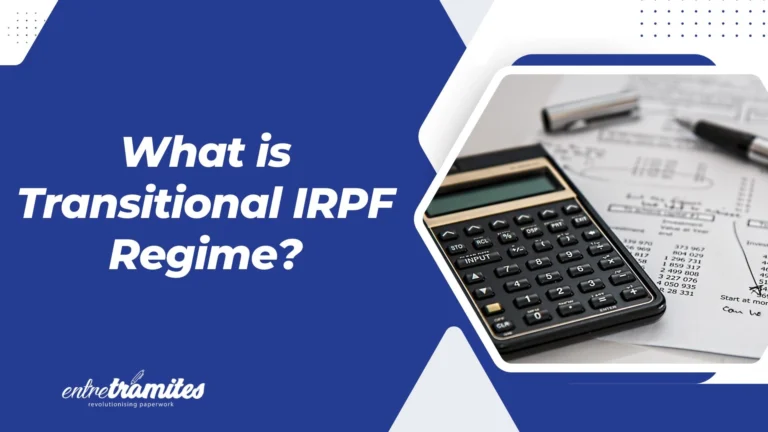The certificate of employment (Certificado de Empresa) is a fundamental document in the Spanish labour landscape, essential for any worker who ends their relationship with a company. This document is not a mere formality; it is the absolute prerequisite for accessing one of the country’s most important economic aids: the unemployment benefit (prestación por desempleo).
Without the data provided in this document, the Spanish Public Employment Service (SEPE) cannot process your application.
Even though most procedures are now handled electronically, it is crucial to understand what this document is, its uses, and how to ensure your company has properly issued it.
What is the Certificate of Employment and Why is it Used?
The certificate of employment is an official form issued by the company upon the termination of the employment relationship with an employee.
Its main function is to accredit the worker’s legal unemployment status (situación legal de desempleo), detailing the contributions made and the exact reason for the contract’s termination. This document is the key piece of evidence SEPE requires to recognize and calculate the contributory unemployment benefit (el paro) or any other subsidy you may be entitled to.
Vital Information Contained in the Certificate:
The information provided determines your rights and the amount you will receive:
- Employment Status: Whether the worker is legally unemployed or in a situation “assimilated to registration” (asimilada al alta).
- Termination Date: The date of the employee’s de-registration from the company.
- Contract Details: The type of contract and the work schedule (full-time, part-time).
- Contribution Data: Contribution bases and salary data for the last 180 days worked.
- Cause of Termination: The specific reason for the job ending (layoff, contract expiry, voluntary resignation, etc.).
The correct completion and timely submission of this certificate of employment by the company is a legal obligation. Non-compliance can lead to sanctions for the company and, more importantly, significant delays in the worker’s benefit payments.
How the Certificate of Employment is Issued and Sent
Since April 1, 2010, the certificate of employment must be sent to SEPE exclusively by telematic means through the Certific@2 application, which is managed by the SEPE. This system speeds up the process and reduces bureaucracy, as the worker no longer needs to physically submit the paper copy at the employment office.
- Mandatory Deadline: The company has a strict deadline of 10 working days from the date the employment relationship ends to send the certificate to SEPE. Once sent via Certific@2, SEPE receives it almost instantly.
- Worker’s Copy: Although the paper copy is no longer necessary for processing the benefit application, the employer can—and often does—give a copy to the worker for their records and as documentary proof.
What to Do If the Company Fails to Send the Certificate
Despite the legal obligation for telematic submission, incidents can occur. If the company fails to send the certificate of employment to SEPE within the established deadline, the worker has several legal options:
- Formally Request it from the Company: The first step is to contact the company (HR or accounting) and formally request that they fulfill their obligation. A simple reminder is often sufficient.
- Apply to SEPE and Report the Absence: If the company persists in non-compliance, the worker should still submit their unemployment benefit application to SEPE within the mandatory 15 working days of job cessation. The worker must notify SEPE of the missing certificate. SEPE will then formally contact the company to demand the document and may sanction the employer for the delay. The worker should submit their termination proof (e.g., termination letter or severance agreement) as evidence.
- Report to the Labour Inspectorate (Inspección de Trabajo): In extreme cases of deliberate non-compliance, the worker can file a formal complaint with the Labour and Social Security Inspectorate. This measure can compel the company to comply and expedite the process.
In any case, the temporary absence of the certificate will not prevent the worker from applying for unemployment protection. SEPE has mechanisms to manage these situations, although the process may be significantly delayed.
Frequently Asked Questions (FAQs)
Is the certificate of employment the same as the finiquito (settlement agreement)?
No, they are different. The finiquito is the final economic settlement the company pays the worker upon job termination (including remaining salary, unpaid holidays, and pro-rated bonuses). The certificate of employment, by contrast, is a formal document that solely attests to the worker’s employment situation for SEPE; it has no direct immediate economic implications.
How are paid but unused vacation days handled on the certificate?
If you have accrued but unused vacation days paid out in your finiquito, the company must reflect this period as a “period of contribution” on the certificate. Critically, during this paid period, the worker is not considered legally unemployed and cannot start collecting the unemployment benefit until this “vacation period” officially ends.
What is the risk if I quit my job (voluntary resignation)?
If you quit your job voluntarily (baja voluntaria), you are not in a legal situation of unemployment (situación legal de desempleo) and, therefore, you are not eligible to collect the contributory unemployment benefit. The certificate of employment will clearly state this cause, leading to the denial of the benefit.
Knowing the purpose and procedure for the certificate of employment is essential knowledge for any Spanish worker or foreign resident in the job market. Ensuring your company has correctly and promptly submitted this document to SEPE is the critical first step toward accessing the unemployment protection you are entitled to.
If you need personalized assistance, at Entre Trámites we offer management and tax advisory services for freelancers and SMEs. You can contact us through this contact form for us to call you, or if you prefer, you can schedule a free consultation or write to us on WhatsApp.





